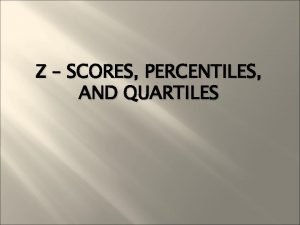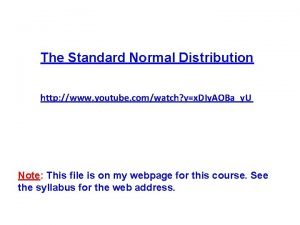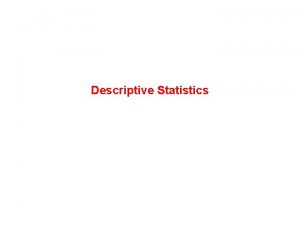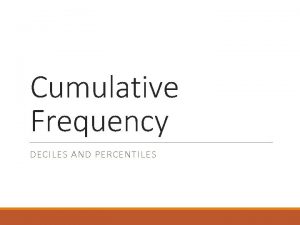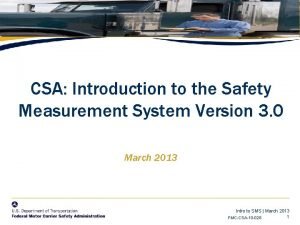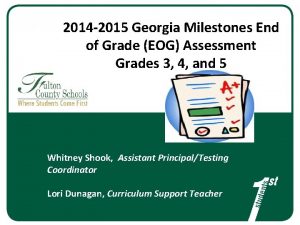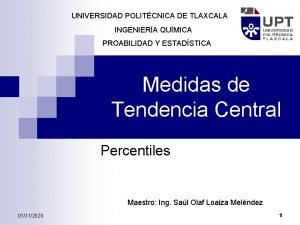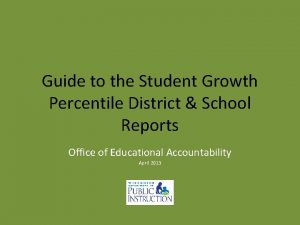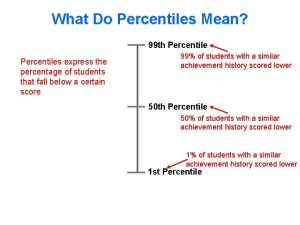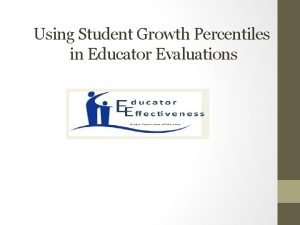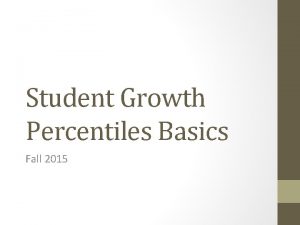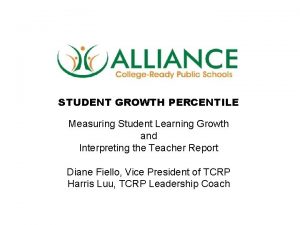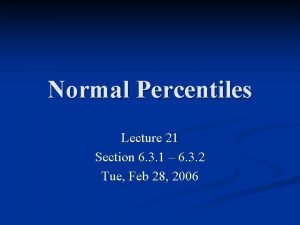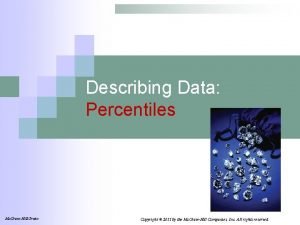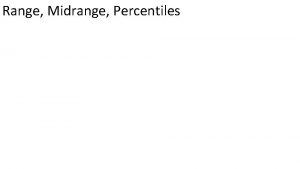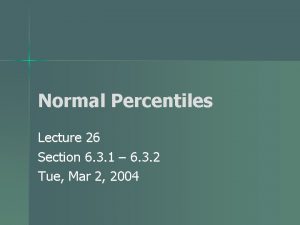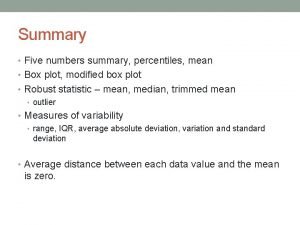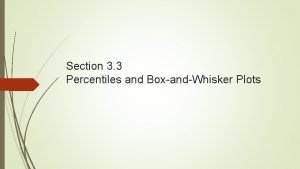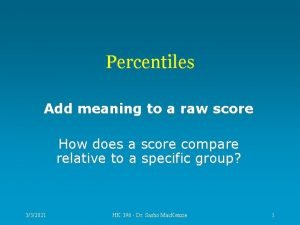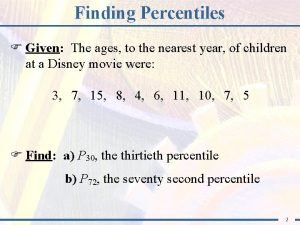Introduction to Student Growth Percentiles Student Growth Percentiles























- Slides: 23

Introduction to Student Growth Percentiles

Student Growth Percentiles (SGPs) • Basic questions – What is a Student Growth Percentile? – How are SGPs calculated for Michigan Students? – Why are SGPs helpful for parents and educators? • Let’s try to understand SGPs by looking at two students who appear to be very similar, but in reality are very different.

Jane • Took the most recent grade 4 reading test • Received a scaled score of 434, which happened to be the state average • In the “Proficient” performance level. • How do we interpret this score? • Well, it depends. . .

John • Also took the most recent grade 4 reading test • Also received a scaled score of 434, which (the state average) • Also in the “Proficient” performance level. • How do we interpret this score? • Well, it depends. . .

Michigan

One way to better understand Jane’s score would be to examine students who scored the same as Jane on last year’s reading test. Michigan

One way to better understand Jane’s score would be to examine students who scored the same as Jane on last year’s reading test. Michigan

In reality, there are many students in Michigan who scored the same on last year’s 3 rd grade reading test, but let’s imagine that there were only 10. Michigan

301 Each of these students scored a 301 on last year’s 3 rd grade reading test and now have taken this year’s 4 th grade reading test as well. 301 Michigan 301 301

Michigan 375 376 382 390 395 408 421 Let’s order these students by their score on this year’s reading test. Michigan 430 432 448

All these students had the same 3 rd grade reading score (301). 375 376 382 390 408 395 421 But each of them scored differently on the 4 th grade reading test. 434 Michigan 430 432 448

3 rd Grade Reading Scale Score = 301 375 376 382 390 395 408 421 430 A Student Growth Percentile (SGP) of 90 indicates that Jane scored better on the 4 th grade reading test than 90% of her academic peers. Michigan 432 434 448

Let’s go through that same process for John by identifying the students in the state who scored the same as John on last year’s reading test. Michigan

Once again, let’s imagine that there were 10 students with the same 3 rd grade score. Michigan

364 Michigan Each of these students scored a 364 on last year’s 3 rd grade reading test and now have taken this year’s 4 th grade reading test as well. 364 364 364 Michigan 364 364 364

Michigan 428 448 462 469 478 484 490 499 Once again, Let’s order these students by their score on this year’s reading test. Michigan 501 502

Last year’s reading score was 364 for all these students. 428 448 462 469 484 478 490 But each of them scored differently on the 4 th grade reading test. 434 Michigan Michigan 499 501 502

Michigan Last year’s reading score was 364 for all these students 428 434 448 462 469 478 484 490 499 501 502 But each of them scored differently on the 4 th grade reading test. A Student Growth Percentile (SGP) of 10 indicates that John scored better on the 4 th grade reading test than only 10% of academic peers.

Even though Jane and John received the exact same score on the 4 th grade reading test, looking at their SGPs reveals a much more complete picture. Jane’s SGP of 90 provides evidence that she has gained academic ground compared to peers to get to her reading level. John’s SGP of 10 tells a different story. John is actually losing ground compared to his academic peers.

Back to our original questions • What is a Student Growth Percentile? • How are SGPs calculated for Michigan Students? • Why are SGPs helpful for parents and educators?

What is a Student Growth Percentile? • Student Growth Percentiles (SGPs) describe a student’s growth compared to other students with similar prior test scores. • An SGP of 50 shows average growth, with higher SGPs showing higher than average growth and lower SGPs showing lower than average growth. • SGPs are a very useful and powerful way to understand student progress from year to year.

How are SGPs calculated for Michigan Students? • Comparing students who began at the same level based on last year’s test • Arranging this year’s scores in order from lowest to highest • Assigning percentile values ranging from 0 -99 to each student score

Why are SGPs helpful for parents and educators? • SGPs tell us how a student is progressing relative to other similar students. • This is important to know if the student is learning as much as we expect based on our understanding of similar students. • This gives parents and educators more information and a more complete picture than simply looking at a performance score.
 Image
Image Finding z-score for a percentile
Finding z-score for a percentile Iq by percentile
Iq by percentile Formulas de percentiles
Formulas de percentiles Tabla de la presión arterial según la edad
Tabla de la presión arterial según la edad Deciles and percentiles
Deciles and percentiles Deciles and percentiles
Deciles and percentiles Csa safety measurement system
Csa safety measurement system Nbme surgery shelf percentiles 2021
Nbme surgery shelf percentiles 2021 Eog grading scale 1-5
Eog grading scale 1-5 Aimsweb plus benchmark scores
Aimsweb plus benchmark scores Proabilidad
Proabilidad Percentil
Percentil Disc personality combinations
Disc personality combinations Growth analysis
Growth analysis Primary growth and secondary growth in plants
Primary growth and secondary growth in plants Step growth polymerization vs chain growth
Step growth polymerization vs chain growth Primary growth and secondary growth in plants
Primary growth and secondary growth in plants Primary growth and secondary growth in plants
Primary growth and secondary growth in plants Geometric growth population
Geometric growth population Neoclassical growth theory vs. endogenous growth theory
Neoclassical growth theory vs. endogenous growth theory Organic vs inorganic growth
Organic vs inorganic growth Median growth percentile
Median growth percentile Student growth objectives examples
Student growth objectives examples

